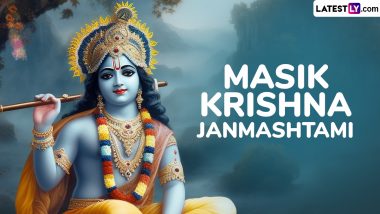Chhath Puja is a significant Hindu festival dedicated to the worship of the sun god, Surya, and Chhathi Maiya, believed to be the sister of Surya. This festival is primarily celebrated in the northern regions of India, particularly in the states of Bihar, Jharkhand, Uttar Pradesh, and some parts of Nepal. Chhath Puja usually spans over four days. Each day has a unique significance and set of rituals.
When is Chhath Puja 2023?
This year, Shashthi Tithi of Shukla Paksha of Kartik month is starting from 09.18 am on Saturday, 18th November. This date will end the next day on Sunday, November 19, at 07:23 am. According to Udayatithi, Chhath Puja is on 19th November.
Day 1: Nahay Khay (Chhath Puja starts)
This year, Nahay-Khay is on 17th November. Sunrise on this day will be at 06:45 am. The sunset will happen at 05:27 pm. Nahay Khay is the first day of Chhath Puja, and it involves devotees taking a holy dip in a river or pond before sunrise. After the bath, they offer prayers to the sun and partake in a vegetarian meal that usually consists of rice, lentils, pumpkin, and gourd. This meal is prepared without salt and is consumed by the devotees, along with their family members. The observance of Nahay Khay symbolizes purification and the beginning of the Chhath Puja.
Day 2: Kharna (The Day of Fasting)
Kharna is on 18th November this year. Sunrise on this day will be at 06:46 am, and sunset will be at 05:26 pm. Kharna, the second day, is when the devotees observe a day-long fast, abstaining from food and water. The fast is broken in the evening after offering prayers to the setting sun. The food items for breaking the fast include jaggery, thekua (a sweet snack), and fruits. This ritual is believed to purify the body and soul, and it's an essential part of Chhath Puja.
Day 3: Sandhya Arghya (Evening Offering)
This year, the evening Arghya of Chhath Puja will be offered on 19th November. Sunset on November 19 will be at 05:26 pm. The third day of Chhath Puja is devoted to the preparation of the offerings and the main evening puja. Devotees prepare thekua, fruits, and other offerings and head to a water body, preferably a river or pond, to offer prayers to the setting sun. The offering is made while standing in the water, and it involves chanting mantras and expressing gratitude to the sun god. The setting sun is revered for its healing and life-giving properties, and this ritual signifies the request for good health, longevity, and blessings for the family.
Day 4: Usha Arghya (Morning Offering)
This year, Arghya will be offered to the rising sun on 20th November. Sunrise on this day will be at 06:47 am. On the final day of Chhath Puja, devotees wake up before sunrise and head to the water body for the morning offerings to the rising sun. This is the most significant part of the Chhath Puja, where devotees stand in the water, offer prayers, and seek blessings for prosperity, well-being, and the fulfilment of their wishes. The rising sun is symbolic of new beginnings, and this ritual is a culmination of the four-day celebration.
Chhath Puja is deeply rooted in the culture and traditions of the regions where it is celebrated. The rituals of Nahay Khay, Kharna, Sandhya Arghya, and Usha Arghya are performed with great devotion and are believed to purify the mind, body, and soul while invoking the blessings of the sun god. This festival is a testament to the reverence of nature and the belief in the healing and life-giving powers of the sun, making it a unique and sacred observance in Hindu culture.
(The above story first appeared on LatestLY on Nov 14, 2023 02:48 AM IST. For more news and updates on politics, world, sports, entertainment and lifestyle, log on to our website latestly.com).













 Quickly
Quickly




















